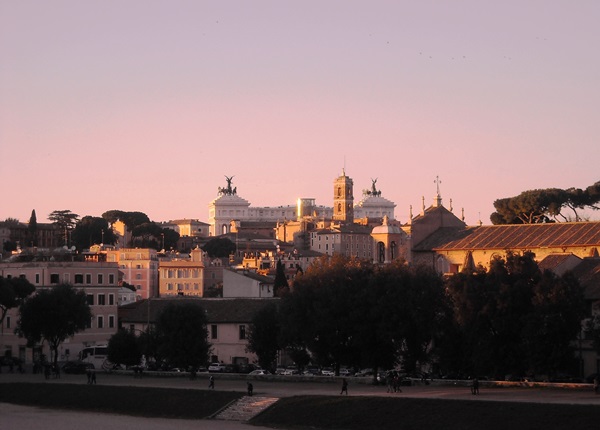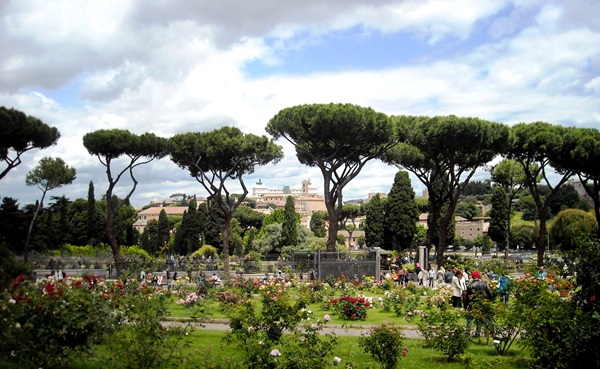Wandering in Rome: do you know the Aventine? A guided tour and a discount voucher for you!
It is well known how Rome arose among the mythical seven hills and how Aventine was one of the absolute protagonists.
In the founding myth Remo chose this hill to spot birds during the famous dispute with his brother Romolo for the choice of the place where to raise the new city. Romolo killed his brother and built Rome on the Palatine Hill instead, the hill facing Aventine.
This latter, however, precisely because of its proximity to the city and its most precious asset, the River Tiber, became a strategic point and residential neighborhood. The plebeians in fact chose it to build their own residences, immediately becoming an area with a strong popular and commercial character (also obviously due to the presence of the nearby river port of the Emporium).
Its appearance began to change during the imperial period when the wealthy patricians began to build their own sumptuous homes, including the private houses of Trajan and Hadrian before they became emperors.
This new aristocratic status was probably the cause of its total destruction during the sack of Rome which occurred at the hands of Alaric I in 410.
There were not only rich domus in Roman times, but also spas, a fire station and many religious buildings, such as the temple of Diana and that of Minerva, the temple of Queen Juno and that of Mercury towards the Circus Maximus.

Due of its proximity to the port, an area of commercial exchange and therefore frequented by people from all parts of the empire, sanctuaries dedicated to oriental divinities began to be built in the late epoch, such as the Mitrei that are found today in the basement of the churches of Santa Prisca and Santa Sabina.
But the wealth kept on the slopes of the Aventine is not dated back only to Roman times, on the contrary. Numerous are churches and basilicas located on the hill (perhaps precisely to “erase” its past so pagan), most of which built right in the Middle Ages, as per Santa Prisca, Santa Sabina and the basilica of Santi Bonifacio and Alessio.
Did you know that inside the basilica of Santa Sabina there is what is called the “devil’s stone” legend?
It is a large black basalt stone resting on a column that indicates the place where, according to the tradition, Saint Dominic spent the nights in prayer. The legend says that the devil, ill tolerating the intense pity with which the saint prayed on the sepulcher containing the bones of some martyrs, threw against him this stone which, however, did not hit Dominic, but broke the plaque that covered the sepulcher: the splits, both on the tombstone and on the stone, are still clearly visible.
A rich Roman family, the Savelli, chose the Aventine precisely to build their immense stronghold, transformed in modern times into the wonderful Giardino degli Aranci. From the inside terrace you can enjoy one of the most spectacular panoramas of the whole city, and the scent of the bitter orange trees makes the walk even more enjoyable!

On the top of the hill an unexpected surprise welcomes the visitor: the villa of the Grand Priory of Malta. History and myth intertwine in the square of the Knights of Malta, decorated and embellished with obelisks, inscriptions and numerous symbols with a mysterious character.
And you should not miss the opportunity to peek through the famous keyhole of the villa’s door to admire the dome of San Pietro from a very exceptional point of view!
A curiosity: at this precise point it is possible to admire three different states simultaneously, Italy, the priory of Malta and the Vatican!
The last of the places that make the Aventine enchanting is the Municipal Rose Garden. The area where the temple dedicated to the goddess Flora stood in Roman times, in the Middle Ages and the Renaissance a large field with orchards, was purchased in 1645 by the Jewish Company of Charity and Death to be used as a Jewish cemetery.

The Jewish Cemetery was then closed in 1895, the tombs transferred to Verano and in 1950 it was chosen by the Municipality as the ideal place to open the new rose garden (the previous one on Colle Oppio was destroyed during the bombings of World War II).
As a thanks to the Jewish community that allowed to recreate the rose garden in a place sacred to them, a stele was placed at the entrance of the garden in memory of the previous destination, while the paths that divide the flower beds inside the rose garden were designed with the shape of the menorah, the seven-branched candelabrum, symbol of Judaism.
It is a magical and enchanted place that reaches its peak during the month of May: more than 1,100 species of roses from all over the world blossom in unison in a triumph of colors.
What are you waiting for? The Aventine is waiting for you!
Author L’Asino d’Oro Cultural Association
